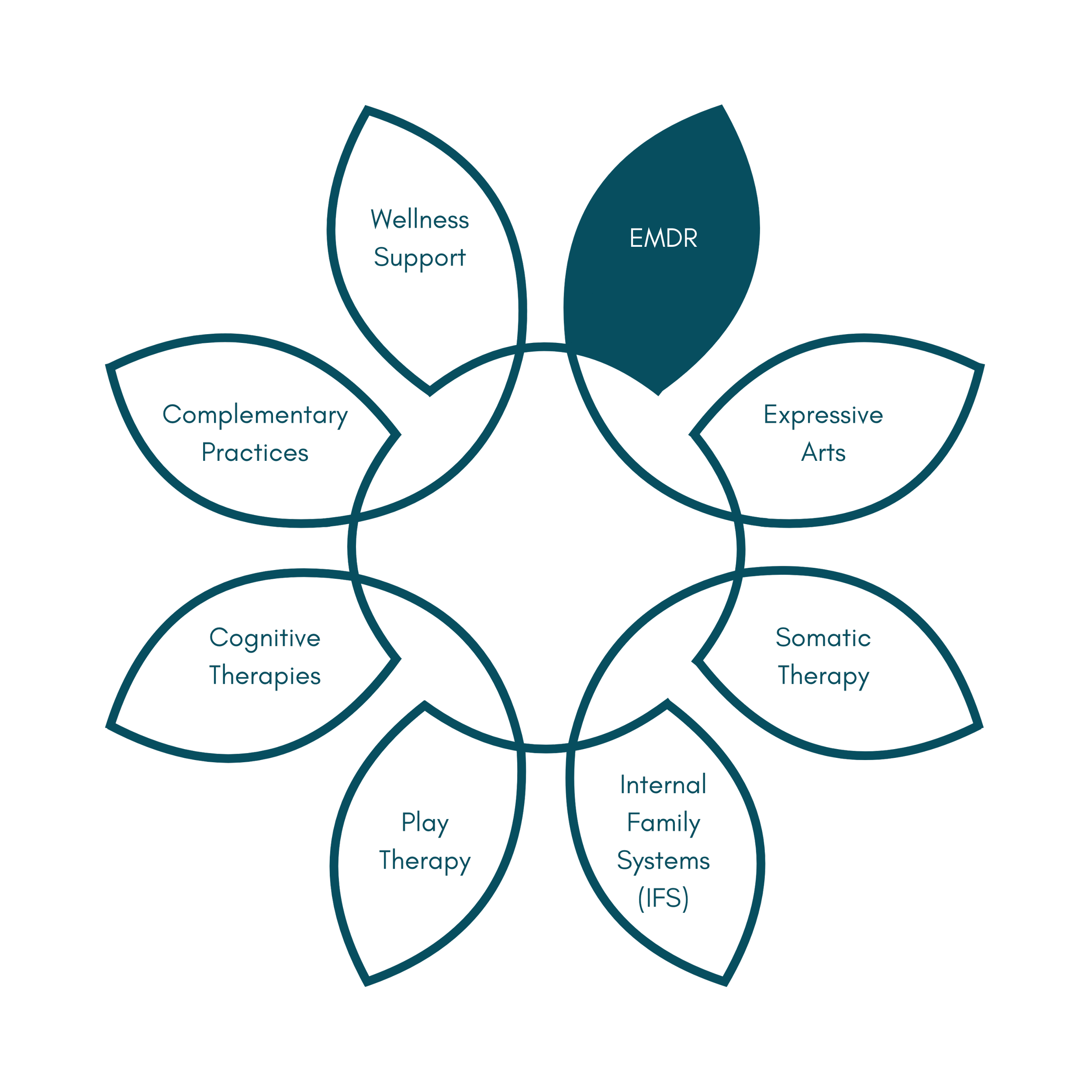
Eye Movement Desensitization Reprocessing (EMDR)
"Healing does not mean the damage never existed. It means the damage no longer controls our lives."
— Akshay Dubey
What is EMDR?
Eye Movement Desensitization and Reprocessing (EMDR) therapy is an interactive psychotherapy technique using a form of neurofeedback that has been effective to relieve psychological and physiological stress.
It is a researched-based treatment for trauma and post-traumatic stress disorder (PTSD), along with other emotional dysregulation.
EMDR addresses the root causes of difficult thoughts, beliefs, and feelings that have resulted by developing negative core beliefs (cognitions) in response to troubling experiences.
What happens during EMDR therapy?
During an EMDR therapy session, you are able to process unresolved traumatic or triggering experiences by addressing a negative belief or feeling that is tied to a memory. EMDR is unique to other forms of therapy in that this processing occurs while participating in bilateral or dual action stimulus.
This essentially helps the brain attend to left-right sensations through eye-movements, sounds, or touch (“tapping”) and allows the brain to resume its natural healing process.
EMDR therapy is broken down into eight different phases, so you’ll need to attend multiple sessions.
Treatment is unique to you and where you are at with processing past memories. A typical session lasts between 60-90 minutes, and will usually take about 12-16 separate sessions. There are several phases to help you prepare for the actual reprocessing part of the therapy.
Phases 1 - 2 :
History, Treatment Planning & Preparation
The first couple sessions are for getting to know you and your history to understand where you’re at in your healing journey and how EMDR can help. This initial evaluation phase also includes talking about your trauma and identifying potential core beliefs and memories to treat specifically.
Before getting started, we’ll go over ways to stay calm and grounded so you're ready to handle whatever may come up during the process.
Phase 3:
Assessment
Next, we’ll work together to choose a specific memory to target and identify all its associated components. This includes images, emotions, negative beliefs and any physical sensations that arise when you concentrate on the event. This sets the stage for reprocessing.
Phases 4 - 7 :
Reprocessing & Healing
Here’s where the real work happens.
While focusing on a specific memory, thought, or image, you’ll follow bilateral stimulation (back-and-forth eye movements, tapping, or sounds). This is when the synapses in your brain are activated and you naturally begin process the memory in a new way.
After each round, we’ll go over what you notice in your body, as well as thoughts, feelings, or images that may arise. Depending on what you report, we may continue with this process until your body feels calm and relaxed.
You’ll be supported throughout the entire process, and you can always pause or stop EMDR at anytime if it becomes too distressing.
Over time, the painful emotions linked to particular thoughts, images, or memories gradually fade until the memory no longer feels as overwhelming—it’s still there, but it doesn’t have the same power over you anymore.
Phase 8:
Re-Evaluation
In follow-up sessions, we’ll evaluate how you feel to make sure the changes are sticking. If there’s any tension or distress still present, we can keep working on the previous memory/belief. If you’re feeling good, we can decide if you want to address another target or move on to the next step in your healing journey. Again, you are free to stop EMDR at any time and at any phase.
Is EMDR a good fit for you?
The reason EMDR is particularly effective is because it allows you to recall a distressing event, with less emotionally charged triggers, while your attention is diverted through dual action stimulus. With EMDR, you are never required to “rehash” the event or provide any specific details for the process to work.
Attention is given to a negative image, belief, emotion, and/or body sensation related to this event, and then to a positive belief that would indicate the issue was resolved.
This method allows you to be exposed to the memories or thoughts without having a strong psychological response. Eventually this will lessen the impact that the memories or thoughts have on you.
EMDR therapy is best suited for those with trauma or PTSD, but can address a wide range of challenges such as:
Anxiety & Depression
Chronic Pain & Illness
Panic Attacks and Phobias
Dissociative Disorders
Mood Disorders
Grief and Loss
Performance Anxiety
Personality Disorders
Sexual Assault
Sleep Disturbance
Substance Abuse and Addiction
Violence and Abuse
Explore All Treatment Approaches







